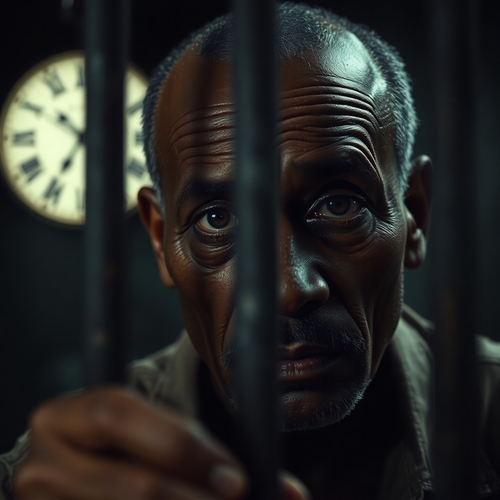If the government can kill in the name
of justice, does that make it any different from the criminals it condemns?
This question lies at the heart of the debate about death row, a concept that
has sparked controversy, ethical dilemmas, and moral debates for decades. For
some, the death penalty is seen as the ultimate form of justice, reserved for
the most heinous criminals. But for others, it is nothing more than a
state-sanctioned form of revenge, a flawed system that has led to irreversible
mistakes and the execution of innocent people.
Death row is where inmates are sent
after being sentenced to death. These individuals are often trapped in a long,
drawn-out process, waiting for years on end, while their appeals are exhausted
and their fate remains uncertain. Yet, despite this drawn-out wait, the truth
remains that death row isn’t infallible. Wrongful convictions have been
uncovered, often with the help of new technologies like DNA testing, showing
that the system is far from perfect.
In the United States, the most common
method of execution is lethal injection. It’s considered to be a “humane”
method, but in many instances, it has proven to be anything but that. In some
cases, executions have been botched, with inmates suffering intense pain,
making a mockery of the supposed comfort of the process. Other methods of
execution, such as the electric chair, hanging, and firing squad, continue to
be used in certain states, often adding to the brutality and controversy
surrounding the death penalty. In other parts of the world, the death penalty
is still carried out publicly, sometimes as a spectacle meant to instil fear
and serve as a deterrent to crime.
But beyond the technicalities of
execution, there’s a human element to death row—the stories of the individuals
who find themselves there. Some are famous, their crimes so notorious that they
are etched into history, while others are forgotten, their names only
remembered for the crimes they committed.
Take Ted Bundy, for instance.
One of the most infamous serial killers in American history, Bundy was
convicted of murdering at least 30 women. His last words before his execution
were oddly detached, not a hint of remorse in sight: “I’d like to give my love
to my family and friends.” Contrast that with Aileen Wuornos, a woman
who became infamous after being convicted of killing seven men in Florida.
Wuornos claimed she had been defending herself from sexual assault and was
often described as a victim of circumstance. Her last words, though cryptic,
were reflective of her troubled life: “I’m sailing with the rock, and I’ll be
back like Independence Day, with Jesus, June 6, like the movie, big mother ship
and all.”
Then there was Timothy McVeigh,
the man behind the Oklahoma City bombing, which killed 168 people, including 19
children. Before his execution, McVeigh quoted the poem Invictus,
declaring: “I am the master of my fate, I am the captain of my soul.” His words
left many speechless, especially in the face of the devastation he had caused.
In a far simpler fashion, Gary Gilmore, the first person executed after
the death penalty was reinstated in the U.S., uttered the words “Let’s do it.”
This simple phrase has since gone down in history, immortalized in Nike’s
famous slogan, showing how quickly words from death row can become a part of
pop culture.
Yet, as we hear about these notorious
last words, it’s easy to forget that not everyone on death row is guilty. The
case of wrongful convictions is an unsettling reality. DNA evidence, for
example, has proven the innocence of many who were once on the brink of death.
Some were exonerated just hours before their execution, raising uncomfortable
questions about how many innocent people have already been put to death.
The death penalty remains a deeply
divisive issue. For some, it’s seen as an important deterrent, a means of
delivering justice to victims’ families. For others, it’s a practice that
perpetuates a cycle of violence, one that risks punishing the innocent while
doing little to address the root causes of crime. The debate often centres on
whether capital punishment is a necessary form of justice or whether it is
merely an act of revenge disguised as a legal process.
As the world grapples with these
difficult questions, death row continues to be a glaring reminder of the power
of the state to take away life. It’s an institution built on the idea of
justice, yet it remains one of the most controversial and morally complex
aspects of modern society. While many argue for its abolition, others insist it
is an essential tool in the fight against crime. The question still lingers,
though: Is the death penalty truly about justice, or is it just another form
of sanctioned revenge?
